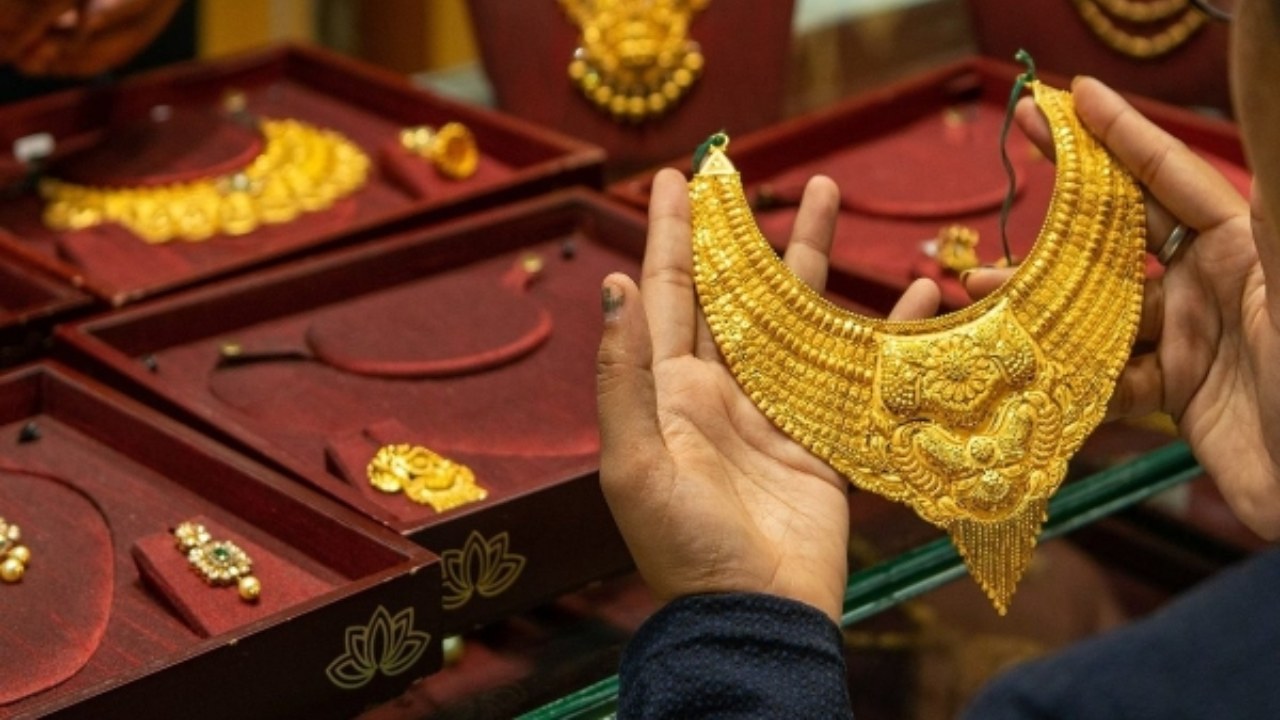Gold and Silver Prices: Following the Diwali euphoria, the gold and silver markets have cooled. After reaching record highs during the festive season, prices are now gradually recovering. Gold and silver prices fell across the country on Tuesday, October 28.
Gold’s Luster Dims After Diwali
Gold prices had surged sharply during the festive season, but now investor profit-booking and the strengthening dollar have somewhat diminished the yellow metal’s luster. In Mumbai, 24-carat gold fell to ₹1,23,270 per 10 grams on Tuesday, while 22-carat gold fell to ₹1,12,990 per 10 grams.
A similar trend was observed in Delhi and Jaipur, where the price of 22-carat gold was recorded at ₹1,13,140 and 24-carat gold at ₹1,23,420 per 10 grams. In Ahmedabad and Pune, 24-carat gold was trading at ₹1,23,320 per 10 grams, and 22-carat gold at ₹1,13,040.
Silver also softened, and investors adopted a cautious stance.
Silver prices also saw a slight decline. In Mumbai, silver was trading at ₹1,54,900 per kilogram. After a surge during Diwali, investors are now appearing a little cautious in the market. According to experts, high gold prices over the past few weeks have weakened demand, leading to a cooling in prices.
Experts’ Opinion: Short-Term Decline, But Market Stable for Investment
According to Aksha Kamboj, Vice President of the India Bullion and Jewellers Association (IBJA) and Chairperson of Aspect Global Ventures, “In the current market environment, 24-carat gold is seeing a decline of approximately ₹1,000 per kg. This is a natural correction after a continuous rise since the beginning of the year.”
She further added that profit-booking and a strong US dollar are the main reasons for this. Expectations regarding a US-China trade agreement are also shaping the market direction. Kamboj believes that investors should wait for clear signals rather than rushing into this time.
Factors Affecting Gold Prices in India
Gold prices in India are not solely determined by local demand. International market rates, import duties, tax structures, and the dollar-rupee exchange rate play a major role. When gold prices fall in the international market or the dollar strengthens, it directly impacts prices in India.
Gold is not just an investment vehicle in India, but also a vital part of tradition and culture. Gold is considered an essential element in everything from weddings to religious ceremonies. This is why its demand always increases during the festive season.
Gold and Silver Status in the International Market
Gold prices continued to decline internationally on Tuesday. US spot gold fell 0.33% to trade at around $3,991 per ounce. Silver remained stable at $46.02 per ounce.
Globally, the impact of Federal Reserve policies, fluctuations in the dollar index, and geopolitical uncertainties in the Middle East is clearly visible on precious metals.
What is the strategy for investors?
According to market experts, gold remains a safe bet for long-term investment. However, its growth may be limited in the short term. Demand is currently stable, but has slowed after festive shopping.
Therefore, investors are advised to avoid rash purchases and wait until the market stabilizes. Current prices could provide an opportunity for those planning long-term investments.
A Stable but Cautious Market
Both gold and silver markets adopted a balanced trend on October 28th. This decline indicates stability in the market after the Diwali surge. Experts believe that global cues and the dollar’s direction will determine the future trend of gold prices in the coming weeks.
In a market like India, where gold is linked to both sentiment and investment, every fluctuation is closely watched by millions of investors. It will be interesting to see in the coming days whether this decline lasts or whether gold regains its shine after the festivals.
